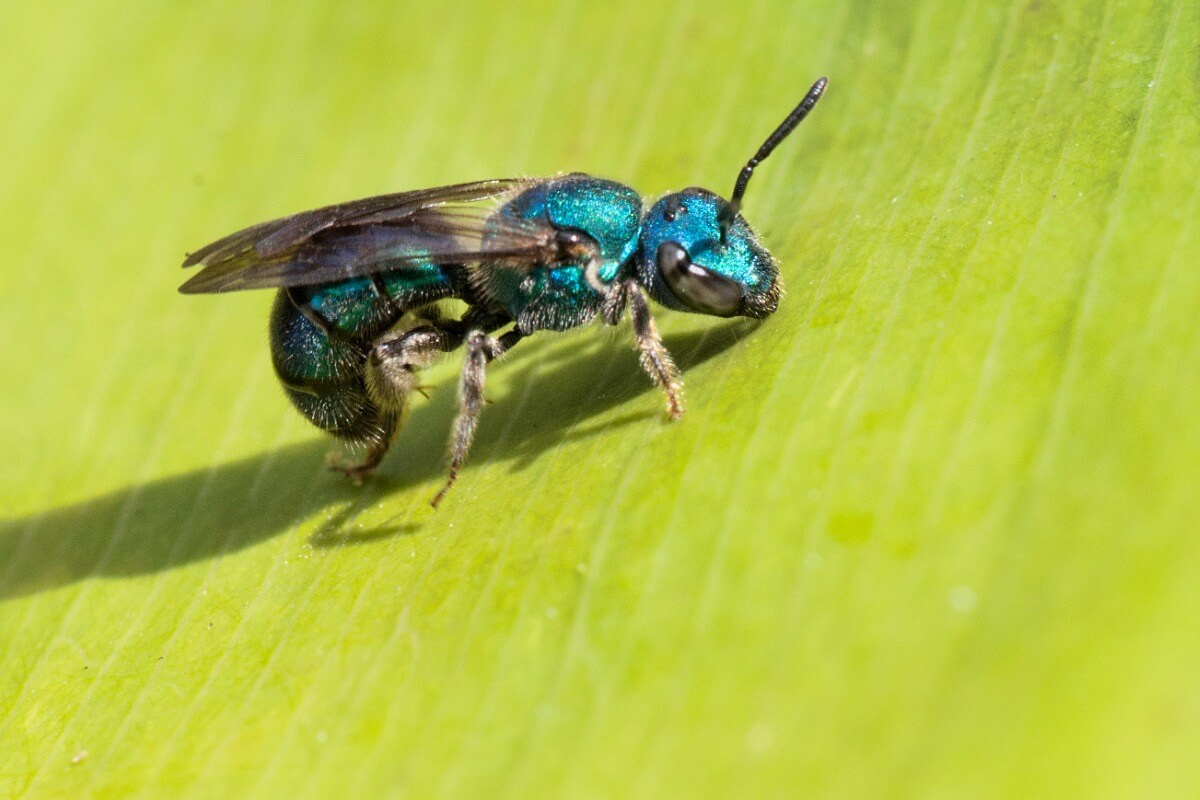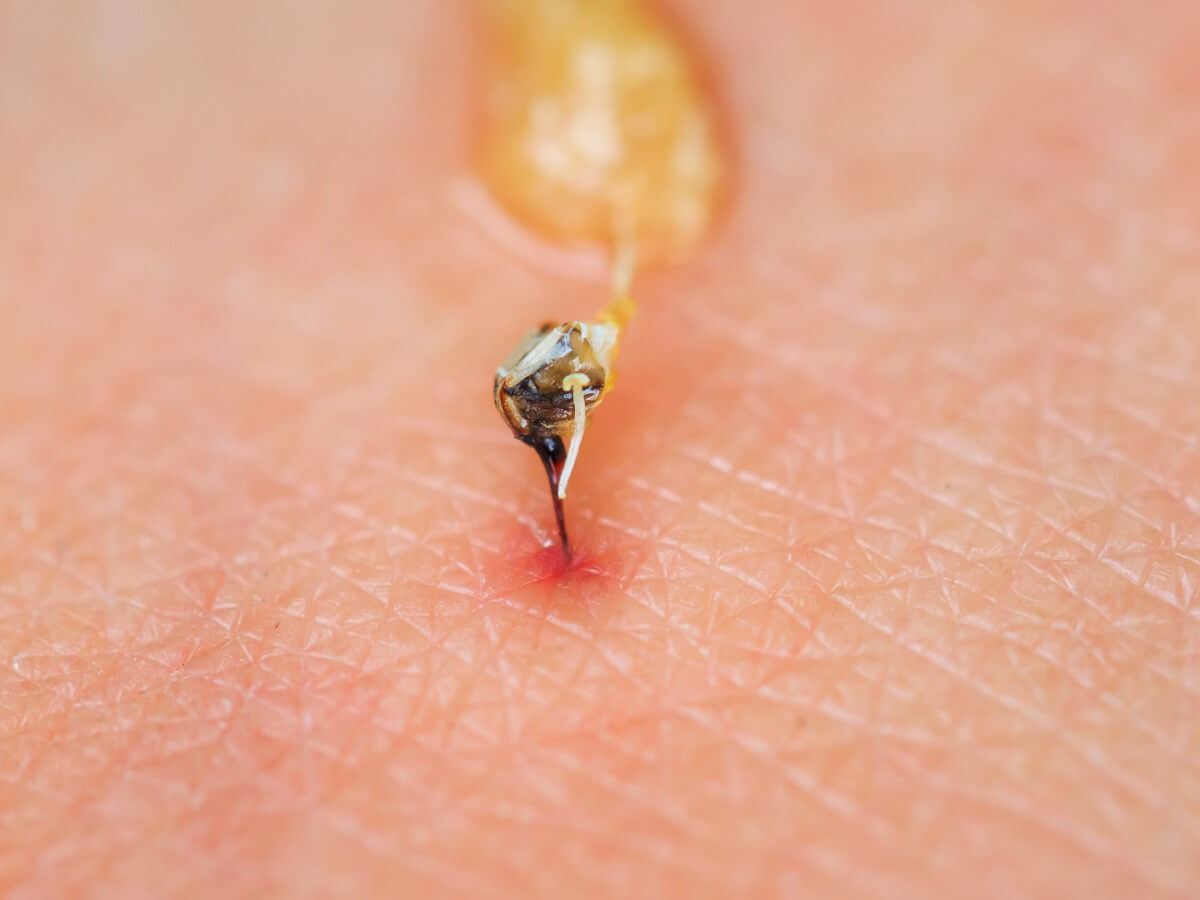Do Bees Die After Stinging?


Written and verified by the biologist Samuel Sanchez
The question we ask this time is simple: do bees die after stinging? These eusocial beings give their all for their larvae and their queen, so they won’t hesitate to sting if a threat approaches the hive with malicious intent. Can this endanger the lives of the hardened workers or do they emerge unscathed from the altercation?
We all know bees and their gentle behavior when not disturbed. However, it’s difficult to analyze a specimen once we’ve been stung, as what we most what to do is get away and put some ice on the sting! Next up, we’ll show you the whole events from a bee’s perspective. Don’t miss it!
What are bees?
Before tackling the question of whether or not bees die after stinging, we need to know how to identify them. First, it should be noted that the term “bee” refers to a group of flying insects belonging to the order Hymenoptera (Hymenoptera), a taxon shared with wasps and ants.
Both bees and wasps belong to the Apocrita suborder, but the species that concern us here are included in the taxon Apoidea, which contains more than 16,000 species. Bees are robust and flat, have much more obvious body hairs and lack the “waist” of wasps, and are defined by a constriction or petiole.
Most of the bees in the world are solitary beings, with dark colors, and they don’t have complex organizations. In any case, those that are used in the agricultural industry and the ones we can usually observe in the fields (Apis genus, especially Apis mellifera) have very striking yellow tones, live in combs, and separate their societies into castes, with queens, workers and males.
There are only 8 species of honey bees, although a total of 43 different subspecies have been detected among them.

A bee’s sting
Bees belong to a group of insects called Aculeata. Along with many wasps and ants, they’re characterized by having a modified ovipositor associated with venom glands and Dufour’s glands. What for many invertebrates is a tool to bury the eggs in the ground, in the Aculeata has become a tool of aggression and defense.
The coloration of many bees is aposematic. This means that, with their generally strident yellow and metallic tones, they alert potential predators to the fact that they carry a stinger capable of injecting venom. To avoid being caught, many flies and insects adopt similar colors and try to imitate the patterns of bees and wasps.
Bees aren’t aggressive at all. They only attack if they feel their colony is in danger.
Do bees die when they sting?
Now we’re going to focus our attention on the honey species of the genus Apis, since they’re the ones that interact with humans the most. For this group, the answer to the question is clear: bees do die from stinging. However, those who perform this act are the workers, as the queen is inside the comb and the males don’t have an ovipositor (and, therefore, they don’t have a stinger either).
The stinger of bees bears a kind of “spike” at its tip. Therefore, when the specimen that has stung a living being pulls out, it remains embedded in the epidermis and has to get rid of part of its abdomen to escape. Literally, the stinger gets stuck into the skin with a piece of the insect.
It’s incredible to see that this body section of the bee can function on its own and continue to inoculate venom, as it contains the gland and the venomous sac. For its part, the Dufour gland seems to secrete alarm pheromones, thus attracting other workers and informing them that a threat is looming over them.
The bee that did the stinging is left with a hole in the abdomen and dies shortly after. However, this isn’t a problem for the colony, as each comb contains more than 60,000 workers whose purpose is to protect the queen and feed the larvae. The death of one or more specimens is a reasonable price to pay to keep society afloat.
Wasps have a smooth stinger, so it doesn’t remain embedded in the skin. They can sting the intruder multiple times and emerge unscathed from battle.
How to remove the stinger of a bee?
Now that you know that bees die when they sting the intruder and leave part of their body in the skin, it’s is normal for you to ask what you should do with the stinger stuck in your skin! In these scenarios, it isn’t enough to put ice on and wait for the pain to pass, because, as we’ve said, the stinger is superficially embedded.
As indicated by the Medlineplus portal, the extraction of this element should be carried out by scraping the skin with the blunt part of a knife or other straight-edged object, always along the length of the stinger. Tweezers shouldn’t be used, as with them you run the risk of squeezing the venom gland when trying to extract and thus inject more toxins in the area of the bite.
With a light scraping, the stinger should come out without a problem. After that, you have to wash the area well and apply ice in 10-minute intervals. If any symptoms of a local or systemic allergic reaction are noticed, you’ll need to go to the emergency room.
The injury must be monitored for several days. If pieces of the stinger remain, infections may develop.

As you can see, the reason why bees die after stinging is simple: their stinger has barbs, so the bee can’t remove it from the skin unless it breaks its own abdomen. Without a doubt, the loss of a life is an affordable price in the colony if they can prevent the death of the queen or the larvae.
All cited sources were thoroughly reviewed by our team to ensure their quality, reliability, currency, and validity. The bibliography of this article was considered reliable and of academic or scientific accuracy.
- Bee sting, Mayoclinic. Recogido a 17 de agosto en https://www.mayoclinic.org/diseases-conditions/bee-stings/symptoms-causes/syc-20353869
- Abdalla, F. C., & Cruz-Landim, C. D. (2001). Dufour glands in the hymenopterans (Apidae, Formicidae, Vespidae): a review. Revista Brasileira de Biologia, 61, 95-106.
- Burrell, B. D., & Smith, B. H. (1995). Modulation of the honey bee (Apis mellifera) sting response by octopamine. Journal of Insect Physiology, 41(8), 671-680.
- Cassier, P., Tel-Zur, D., & Lensky, Y. (1994). The sting sheaths of honey bee workers (Apis mellifera L.): structure and alarm pheromone secretion. Journal of Insect Physiology, 40(1), 23-32.
This text is provided for informational purposes only and does not replace consultation with a professional. If in doubt, consult your specialist.